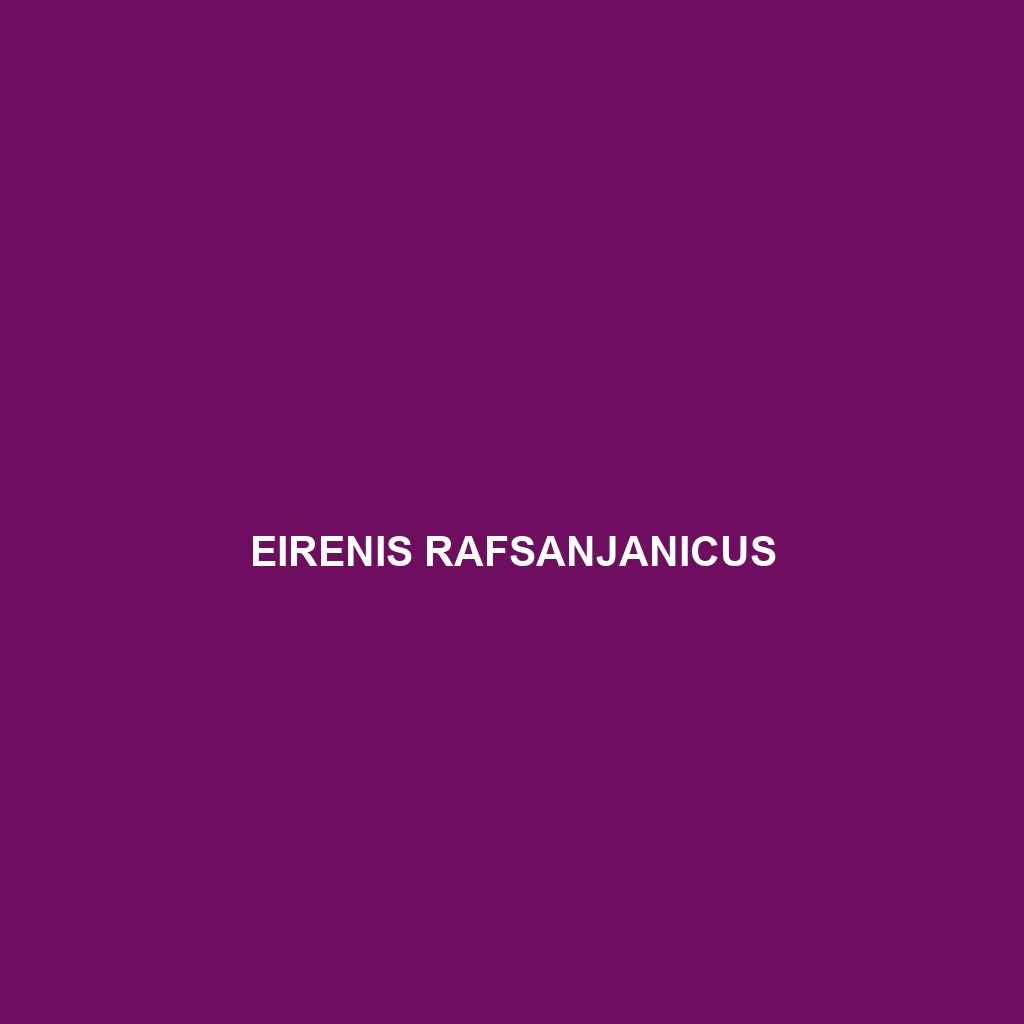Common Name
Eirenis rafsanjanicus
Scientific Name
Eirenis rafsanjanicus
Habitat
Eirenis rafsanjanicus, commonly known as the Rafsanjan snake, is primarily found in the arid and semi-arid regions of the Middle East, particularly in Iran. This species is typically located in grasslands and dry shrublands, often characterized by rocky terrains and sparse vegetation. The climate in these regions is predominantly hot and dry, with most rainfall occurring in the winter. These environmental conditions create a unique habitat where Eirenis rafsanjanicus can thrive, making it essential to understand their preferred ecosystems for conservation efforts. Additionally, this snake can sometimes be spotted in rocky outcrops and near agricultural lands, where it may hunt for food.
Physical Characteristics
Eirenis rafsanjanicus exhibits a slender body, averaging between 40 to 70 centimeters in length, with its maximum length reaching up to 100 centimeters in rare cases. The color of this species ranges from light brown to grey, providing excellent camouflage against the rocky and sandy substrates of its habitat. One of the distinctive features of Eirenis rafsanjanicus is its small, sharp scales, which give it a unique texture. The snake’s head is slightly flattened, and it has small, beady eyes that are well-suited for its nocturnal activities. This species lacks distinctive patterns, which aids in its inconspicuous appearance while hunting or escaping predators.
Behavior
Eirenis rafsanjanicus is primarily nocturnal, which means it is most active during the night. During the day, it seeks refuge under rocks or in burrows, emerging at dusk to hunt for prey. The snake exhibits solitary behavior, coming together only during the breeding season. Mating rituals involve males engaging in courtship displays that may include body undulations and following scent trails left by females. This species is known for its quick reflexes, allowing it to evade threats efficiently. When threatened, Eirenis rafsanjanicus may flatten its body and remain motionless, utilizing its natural coloration for camouflage, or it may quickly retreat to its hiding place.
Diet
Eirenis rafsanjanicus is an insectivore, primarily feeding on a diet consisting of insects and other small invertebrates. Its hunting strategy relies on ambushing its prey, often lying in wait among rocks or foliage. Common dietary items include crickets, beetles, and caterpillars. This snake’s slender body and agile movements allow it to navigate through tight spaces in search of food. Moreover, it plays a significant role in controlling insect populations within its habitat, highlighting its importance in the ecological balance.
Reproduction
The mating season for Eirenis rafsanjanicus typically occurs in the spring, following the cooler months when temperatures become more favorable. After a gestation period of about 60 to 70 days, females give birth to live young, usually between three to five offspring per litter. The young snakes are independent from birth and grow rapidly in their first year. Parental care is non-existent as the female does not tend to her young after birth. This reproductive strategy is common among many snake species and is essential for the survival of the species in challenging environments.
Conservation Status
According to the IUCN Red List, Eirenis rafsanjanicus is currently classified as of ‘Least Concern’, suggesting that it does not face immediate threats to its population levels. However, habitat destruction due to agricultural expansion and urban development poses challenges to this species’ long-term survival. Conservation efforts need to focus on preserving the natural landscapes where these snakes are found, ensuring their habitats remain intact and protected from human encroachment. Researchers are continuously monitoring their populations to keep track of any changes in their conservation status.
Interesting Facts
One of the most intriguing aspects of Eirenis rafsanjanicus is its ability to blend seamlessly into its surroundings, making it a master of camouflage. This adaptation not only aids in hunting but also provides protection against predators. Additionally, this species exhibits a fascinating method of locomotion called ‘concertina movement,’ where it coils and stretches its body to navigate through rocky terrains effectively. Eirenis rafsanjanicus is also relatively resilient to the harsh climate of its habitat, showcasing evolutionary adaptations that make it well-suited for survival in challenging conditions.
Role in Ecosystem
Eirenis rafsanjanicus plays a crucial ecological role as both a predator and prey within its habitat. By controlling insect populations, it helps maintain a balance in the local ecosystem, ensuring that no single species dominates the food web. Additionally, it serves as a food source for larger predators, such as birds of prey and mammals. This dual role underscores its importance in maintaining ecological integrity and demonstrates how each species contributes to the health of their environment.
